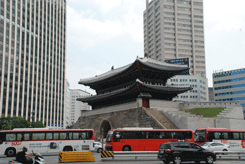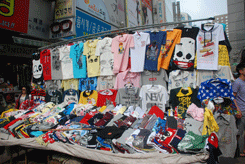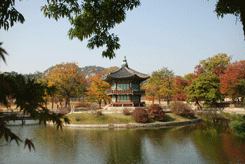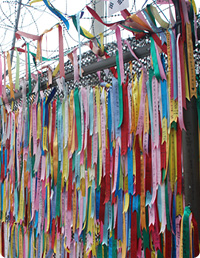Seat In Coach
Morning Seoul 3 hours



Tour Highlights
- Blue House Sarangche
- Gyeongbokgung Palace
- National Folk Museum of Korea
- Jogyesa temple
- Namdaemun Market
We book this tour through subcontracted out to other tour companies. Therefore the tour quality and visits by their nature may vary company to company.
Arrival complications
Sometimes the unexpected can happen; If you have missed your tour departure, first call the relevant emergency number and speak to our staff who will be happy to help you catch up with the group. Please note that you are responsible for any extra travelling expenses incurred due to you missing your tour’s departure, so please be on time.
Seoul / The Best of Morning (- - -)
Join the tour at the designated pick up point. Your exploration this morning begins with a driving tour of Seoul, featuring sites such as Seoul Plaza, City Hall, Cheonggye Square and pedestrian-friendly Gwanghwamun Plaza that is hemmed in on three sides by rushing traffic. The plaza is lined on each side with 365m long streamlets, two centimeters deep and one meter across, the stone bed of the plaza's east side waterway engraved with important events in chronological order from 1392 to 2008.
You can enjoy a short stop at Blue House Sarangche featuring a two-story building, with exhibition halls related to culture and tourism on the first floor and halls related to the national vision on the second floor. The Blue House
is an executive office and official residence of the president of Korea.
then, step back in time to when life was gracefully slow and discover Gyeongbokgung Palace, a particularly charming spot that represents a colorful and turbulent side of the capital's 500-year history. Depending on timing, you may witness the Royal Guard Changing Ceremony featuring parade, password verification, duty shift and patrolling the gate. Accompanied by a court band with its colorful costumes and royal flags, the ceremony is performed daily basis at 10:00 and 14:00 except Tuesdays, although it is cancelled in case of rain or extremely hot or cold weather.
Learn about the cultural wealth of this friendly and picturesque nation at the National Folk Museum of Korea. You visit to the museum will familiarize you with wealthy culture of this friendly and picturesque nation. It is an excellent facility providing insight into the daily
life and work, costumes and ornaments, handicrafts and technology, educations, living quarters, dietary life, oriental medicine, performing arts and games, beliefs and rituals, and socio cultural life of the Korean people from the prehistoric age to the Joseon dynasty.
Squeeze in a time to visit Jogyesa, the head temple of Jogyejong the principal sect of Korean Buddhism, emphasizing the Zen orthodox, meditation tradition and the purity of monastic celibacy. The temple does not give off the solemn and traditional air of the other temples located deep in the mountains, but when you enter the temple the frenzy of the city start disappearing.
The tour drops you at the centuries-old Namdaemun Market brimming with well over 11,000 shops selling anything you can imagine. One of the most colorful aspects of the market is an endless sprawl of street-vendor stalls that setup in the alleys and walkways between the buildings. The market is seriously crowded, so be prepared to get bumped around. A fantastic place to haggle over the price to get the best deal on something you want or simply admire the vibrancy of this massive market. At the western entrance of the market in the middle of a traffic circle stands Sungnyemun. It is a formidable and iconic construct that served as the southern gate of the wall that surrounded Seoul during the period of the Joseon Dynasty.
Or if you please at Myeongdong, allowing you to explore it at own. Or you will continue your ride to Lotte hotel Seoul. Myeongdong has been the center of fashion. Boutiques, cafes and swanky shops that sell clothes and accessories lined on both sides of the narrow alleys of Myeongdong. The alleyways come alive with shoppers walking past the fancy displays of shoes and handbags, tailor-made suits and shirts, latest design dresses, handcrafted modern jewelry, stockings and cosmetics. Of the most notable attraction here is the Gothic style Myeongdong cathedral. It was built in 1898 and serves as the administrative seat of the Catholic church in Korea.
On Tuesdays when Gyeongbokgung Palace is closed, the visit will be substituted with Deoksugung Palace.
Deoksugung palace
With the destruction of Gyeongbok palace by Hideyoshi's invasion in the late 16th century, it had been the detached palace and not used by kings for 270 years with exception of several years by King Injo. In 1897 when King Gojong ended his one year stay in the nearby Russian legation, he refused to return to Gyeongbok palace, and settled here. Attractions are Daehanmun, the main gate of the palace which was moved back from its original location in 1971. Junghwamun gate, in accordance with palace architecture, there is a stone bridge to cross after entering the palace grounds. There are three series of steps in front of the three doorways to this gate; The king used only the middle entrance. The royal dragon insignia is in the center flanked by four Haetae (fire eating monsters) on the step railings. The audience hall, originally a double-roofed building, was reconstructed with only one floor after fire of 1904. The throne chair is seen in the center. The dragon theme, symbol of royalty, is prevalent throughout the design of the throne chair. The huge incense burners located on the corners of the platform were lit during a royal audience. Seokjojeon is the art gallery designed by an English architect in 1901 and completed in 1909. Chunmyeongjeon, the King Gojong's residence, Jukjodang, the King Injo's residence, Seogeodang, the King Sunjo's residence, inner palace residences, a bell cast in 1306 to honor Queen of the first king of Joseon dynasty (1392-1910) and a statue of King Sejong who invented the Korean Alphabet Hangul in 1443.
Remarks
The tour is subject to operation with minimum two persons and will be conducted in English.






